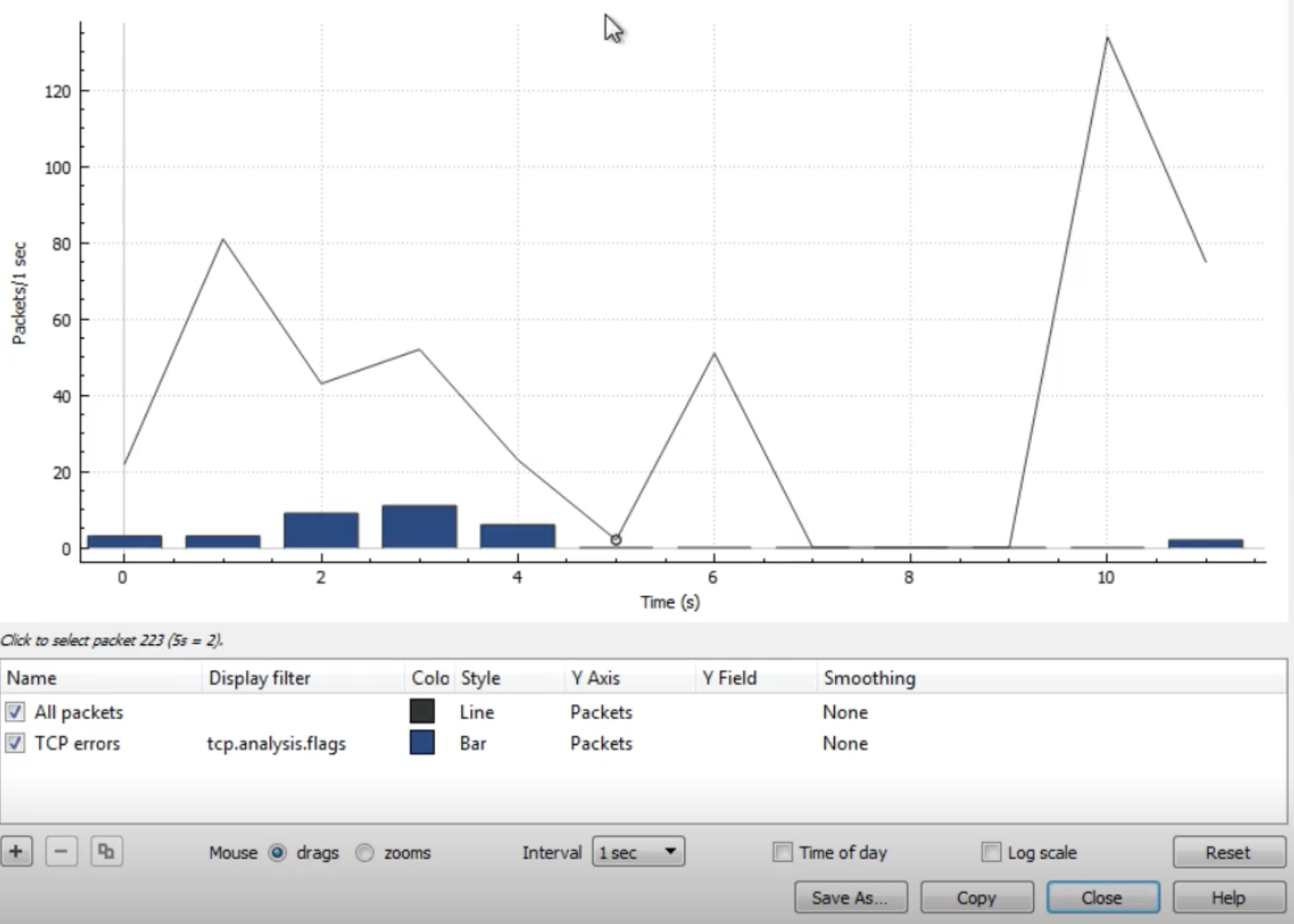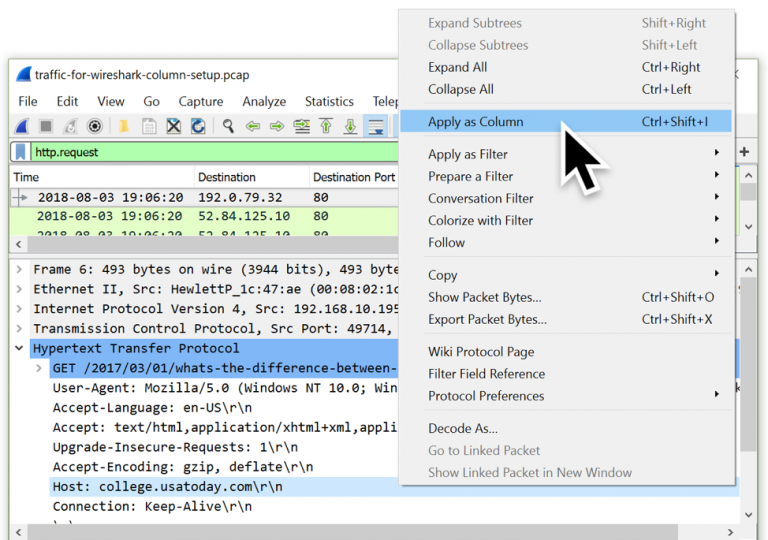5.3 KiB
Wireshark tricks
Improve your Wireshark skills
Tutorials
The following tutorials are amazing to learn some cool basic tricks:
- https://unit42.paloaltonetworks.com/unit42-customizing-wireshark-changing-column-display/
- https://unit42.paloaltonetworks.com/using-wireshark-display-filter-expressions/
- https://unit42.paloaltonetworks.com/using-wireshark-identifying-hosts-and-users/
- https://unit42.paloaltonetworks.com/using-wireshark-exporting-objects-from-a-pcap/
Analysed Information
Expert Information
Clicking on Analyze --> Expert Information you will have an overview of what is happening in the packets analised:
Resolved Addresses
Under Statistics --> Resolved Addresses you can find several information that was "resolved" by wireshark like port/transport to protocol, mac to manufacturer...
This is interesting to know what is implicated in the communication.
Protocol Hierarchy
Under Statistics --> Protocol Hierarchy you can find the protocols involved in the communication and data about them.
Conversations
Under Statistics --> Conversations you can find a summary of the conversations in the communication and data about them.
Endpoints
Under Statistics --> Endpoints you can find a summary of the endpoints in the communication and data about each of them.
DNS info
Under Statistics --> DNS you can find statistics about the DNS request captured.
I/O Graph
Under Statistics --> I/O Graph you can find a graph of the communication.
Filters
Here you can find wireshark filter depending on the protocol: https://www.wireshark.org/docs/dfref/
Other interesting filters:
(http.request or ssl.handshake.type == 1) and !(udp.port eq 1900)- HTTP and initial HTTPS traffic
(http.request or ssl.handshake.type == 1 or tcp.flags eq 0x0002) and !(udp.port eq 1900)- HTTP and initial HTTPS traffic + TCP SYN
(http.request or ssl.handshake.type == 1 or tcp.flags eq 0x0002 or dns) and !(udp.port eq 1900)- HTTP and initial HTTPS traffic + TCP SYN + DNS requests
Search
If you want to search for content inside the packets of the sessions press CTRL+f
You can add new layers to the main information bar (No., Time, Source...) pressing right bottom and Edit Column
Practice: https://www.malware-traffic-analysis.net/
Identifying Domains
You can add a column that show the Host HTTP header:
And a column that add the Server name from an initiating HTTPS connection **ssl.handshake.type == 1**:
Identifying local hostnames
From DHCP
In current Wireshark instead of bootp you need to search for DHCP
From NBNS
Decrypting TLS
Decrypting https traffic with server private key
edit>preference>protocol>ssl>
Press Edit and add all the data of the server and the private key _IP, Port, Protocol, Key file and password_
Decrypting https traffic with symmetric session keys
It turns out that Firefox and Chrome both support logging the symmetric session key used to encrypt TLS traffic to a file. You can then point Wireshark at said file and presto! decrypted TLS traffic. More in: https://redflagsecurity.net/2019/03/10/decrypting-tls-wireshark/
To detect this search inside the environment for to variable SSLKEYLOGFILE
A file of shared keys will looks like this:
To import this in wireshark go to edit>preference>protocol>ssl> and import it in (Pre)-Master-Secret log filename:
ADB communication
Extract an APK from an ADB communication where the APK was sent:
from scapy.all import *
pcap = rdpcap("final2.pcapng")
def rm_data(data):
splitted = data.split(b"DATA")
if len(splitted) == 1:
return data
else:
return splitted[0]+splitted[1][4:]
all_bytes = b""
for pkt in pcap:
if Raw in pkt:
a = pkt[Raw]
if b"WRTE" == bytes(a)[:4]:
all_bytes += rm_data(bytes(a)[24:])
else:
all_bytes += rm_data(bytes(a))
print(all_bytes)
f = open('all_bytes.data', 'w+b')
f.write(all_bytes)
f.close()













